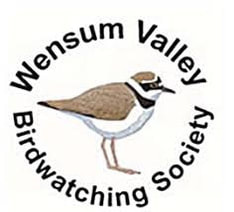|
Speaker: Su Gough Reporter: Sue Gale In October Su Gough reminded us of what a good speaker she is when she came to talk about ‘Tricks of the Trade’. This was an excellent grounding in bird identification for the less experienced among us, but also entertaining and enjoyable revision for the more experienced. I suspect almost everyone picked up a new trick or piece of information. Before the break for coffee Su introduced the tricks of ID by sight. Although plumage is the first thing most people think about when trying to identify a bird, it is by no means the only thing to take into account. Size is not always easy to be sure of, if a bird is at a distance and alone, but it is
important. Su told us of the neighbour who had reported a buff-coloured bird with a red face coming to the feeders in her garden. The obvious suggestion was Goldfinch, but when someone went to check it turned out to be a Sandhill Crane. The neighbour had omitted to mention that the bird was about 3 feet tall and was standing on the ground while reaching the feeders! Shape can also be an important guide, for example when a juvenile Starling looks like a different species from the parent but has the same structure and bill shape. And don’t forget the jizz (general impression of size and shape), which can include posture, gait, feeding action, flight style etc. This improves with practice so that eventually it may just feel like ‘that looks like a –‘. Habitat also needs to be thought about, as are the season of the year and the expected range of the species. After the tea break Su moved on to ID by sound – something that even more experienced birders often find challenging. So why learn? You can often separate two species with very similar appearances by the song or call, or if you have learned the common bird calls you may be alerted to the presence of an unusual visitor by the unfamiliar song. There are two types of sound. The first, the song, is used during breeding or to claim or defend a territory, and is generally sung by males only. The second, harder to learn, are calls. These are used for normal daily activity, like contact calls or alarm calls, and are made by both males and females. You can forget about the idea that birds only sing in Spring! Many sing all year and all may call at any time. Su explained that the complex songs of Passerines {perching species, or song birds) are possible because of an organ called the syrinx, which is much more complicated than our own voice box. But that said, many non-passerines mange to make very beautiful songs, like the Curlew for example. Other species contrive to make their distinctive ‘song’ without the use of the voice at all, by clapping their wings or by rubbing their heels together! The best way to learn these songs, and indeed bird identification in general, is to practise in the field. A more experienced birder can be a great help, but there are also many resources available to help. The website xeno-canto (xeno-canto.org) has thousands of examples of the song of each species, and will say where they were recorded to take account of regional accents (yes, really). The BTO, where Su worked for many years, has produced a series of videos showing how to separate similar species and is highly recommended. Many thanks to Su for an enjoyable and stimulating evening.
0 Comments
Leave a Reply. |
Please feel free to read through our reports from our monthly indoor / online meetings. Archives
May 2024
Categories |

 RSS Feed
RSS Feed
